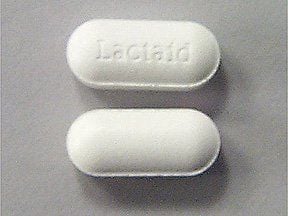This is an automatically translated article.
Most parents know that children need vitamins and minerals for healthy absorption. When children do not absorb nutrients from vitamins and minerals, what should parents do to improve? The following article tells us more about this.
1. What is nutrient absorption?
When you feed your baby food, it goes into the stomach, but that's only part of the process. Once inside your baby's intestines, the gut microbiome and digestive enzymes kick in, breaking food down into molecules small enough for your body to absorb.
Most of these molecules will then travel from the stomach to the upper part of the small intestine. Here, they move into the bloodstream and begin their journey throughout the child's body. The ability of children's bodies to carry out this process is important because nutrient absorption can vary significantly.
Some studies show that the amount of nutrients a child's body absorbs from foods that parents prepare can be as little as 10%. When it's optimal, it can be 90%.
But because every part of the child's body depends on the absorption of nutrients to carry out daily tasks. The amount of vitamins and minerals that parents are providing each day for children is indispensable for health.
Children not absorbing nutrition for a long time can have serious consequences for the body and mind. To make sure your child is getting all the nutrients he needs, be sure to offer a variety of foods.
2. What causes children not to absorb nutrients?
2.1. Congenital syndrome
Some genetic or congenital conditions, such as celiac disease, can prevent your baby from absorbing nutrients from food. According to pediatric gastroenterologists, Celiac disease is an inherited inability to digest foods containing gluten, a protein found in wheat, rye, and barley that is the most common cause of constipation. malabsorption.
Some other congenital syndromes that cause malabsorption in children are:
Cystic fibrosis is the second most common genetic disorder leading to malabsorption in children. Chronic liver disease due to conditions such as biliary hypoplasia can also lead to malabsorption. Congenital lactose intolerance occurs much less frequently than lactose intolerance that develops after 2 years of age. If your baby doesn't produce lactase, an enzyme that breaks down lactose in milk, he won't be able to absorb it.
2.2. Milk allergy prevents children from absorbing nutrients
Food allergies, especially to cow's milk or soy, affect about 2 - 3% of babies. A milk allergy can cause acute symptoms such as wheezing, vomiting, or a rash, but can also cause chronic symptoms.
Milk allergy can damage the intestinal lining, causing bleeding and difficulty absorbing nutrients. Your baby will need a dairy-free or hypoallergenic formula that helps break down the proteins in the milk so they are better absorbed.
2.3. Defects
Newborns with gastrointestinal anomalies may also have malabsorption. Most malformations are diagnosed soon after birth, when vomiting or bloating makes it impossible for food to pass through the digestive tract. Children with short bowel syndrome that occur naturally or by surgical removal of the bowel with disease after birth do not have enough surface area in the intestines to fully absorb nutrients develop.

Trẻ không hấp thu dinh dưỡng trong một thời gian dài có thể gây ra những hậu quả nghiêm trọng
3. Manifestations of nutritional malabsorption in children?
In children with poor nutritional absorption, there are signs and symptoms below:
Children have loose stools, fishy odors, a lot of water and raw stools. Children with anorexia, underdevelopment of weight and height, lead to malnutrition. Children sometimes have abdominal pain, bloating, nausea and vomiting. Children feel tired, lose weight, less flexible. Changes in appetite lead to no appetite, poor appetite. When children lack micronutrients, they give off signs such as: Iron deficiency leads to pale eye mucosa, swollen feet due to vitamin B1 deficiency, sore muscles, cramps due to children not absorbing nutrients from foods rich in calcium. Many children have severe or prolonged malabsorption leading to edema due to reduced protein factor, dry skin.
4. Children do not absorb what to do?
"What to do if the baby does not eat well" is a common question asked by many parents who have children in this condition. There are several ways that you can improve to help your baby absorb nutrients, develop healthy eating habits for life.
4.1. Eat a variety of foods
To provide your child with the nutrients they need for health, growth and development, it's fundamental to choose from a variety of foods from the 5 food groups. The 5 healthy food groups are vegetables, fruits, whole grain foods, dairy, and protein.
4.2. Increase fruits and vegetables
Fruits and vegetables contain important nutrients such as fiber and vitamins. Children can be picky about this food group, so try to choose fruits and vegetables that have different colors, textures, and flavors so your child can find a favorite. For young children, simply arranging fruits and vegetables on a plate (like a happy face or animal shape, for example) can get them excited about eating vegetables.
4.3. Healthy snacks
If your child is hungry between meals, encourage healthy snacks such as:
- Fruit salad or whole fruit
- Plain yogurt and fruit
- Avocado and cheese with pita
- Vegetable dip
- Boiled egg
- Dry roasted Pepita and sunflower seeds
4.4. Dietary restrictions, allergies and food intolerances
Some children have problems with food allergies and intolerances that can affect their overall health and development. If you are concerned that a food allergy or intolerance may be affecting your child, see your doctor to discuss those concerns.
4. 5. Engage children by creating healthy foods
Get your child interested in food by creating a healthy food environment, including food selection and preparation. You can ask your child to help plan shopping and meals. Children love to cook, so as soon as they are ready you can teach them some simple recipes for healthy meals.

Tăng trái cây và rau quả giúp cải thiện tình trạng trẻ không hấp thu dinh dưỡng
4.6. Set a good example
Eating healthy on your own will reinforce your child's healthy eating habits. Children learn from you and the best way to teach them is to set an example for them to follow. Avoid using junk food as a reward, as the behavior or emotion does not support the development of healthy eating habits.
4.7. Read food labels
Reading food labels is the best way to know how healthy a product is. The fewer ingredients in packaged foods the better, and remember to check the fat and sugar content of the food as this will guide you in making better product choices.
4.8. Limit junk food
Limit unhealthy food choices in the home and reconsider snacking. Fast foods are a quick and easy solution to a meal but are not a healthy option, they are often high in salt, saturated fat and sugar, and low in fiber and nutrients.
Sweet drinks often contain a lot of sugar or artificial sweeteners and colors, which are not nutritionally beneficial for your child. Excessive consumption of sweetened beverages has been linked to poor health, weight gain, and tooth decay. Water is the best choice for babies over 12 months old.
In short, a child's lack of nutrition for a long time can have serious consequences for the child's development. To make sure your child gets all the nutrients he or she needs, be sure to offer a variety of foods.
Baby needs to add necessary micronutrients: Zinc, selenium, chromium, vitamins B1 and B6, Ginger, acerola fruit extract (vitamin C),... to improve taste, eat well, gain height and weight right and beyond the standard, good immune system, enhanced resistance to less sickness and less digestive problems.
The improvement of symptoms can take place for a long time, so it is recommended that parents be calm and persistent when supplementing with nutrients for children, even through eating or functional foods. In particular, the use of functional foods should choose those of natural origin that are easily absorbed, do not allow simultaneous use of many types or continuously change the types of functional foods.
For more nutritional knowledge and child care for each age, parents should regularly visit the website vimec.com and make an appointment with the leading doctors, pediatric and nutrition experts of the National General Hospital. Vinmec when needing advice on children's health.













